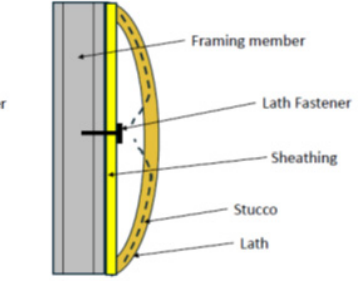Matthew Innocenzi and Patricia Aguirre
i Principal, Nick Innocenzi and Sons Consulting Engineers & Associates, Inc., Warrenton, Virginia, United States, minnocenzi@niscea.com
ii Consultant, Bristow, Virginia, United States, tricia@tros.org
ABSTRACT
Adhered masonry veneer and exterior portland cement-based plaster (stucco) have been successfully applied over lath fastened to exterior framing members in accordance with prescriptive lath fastening requirements provided in ASTM C1063, Standard Specification for Installation of Lathing and Furring to Receive Interior and Exterior Portland Cement-Based Plaster, for decades. Over the last 25 years, ongoing data collection and improved modeling has led to a better understanding of wind load pressures, and design and construction standards have been revised accordingly. In general, this resulted in increased design wind pressure values, particularly in hurricane-prone regions. However, the ASTM C1063 prescriptive spacing requirements have not changed since the standard’s inception in 1986. With this increase in wind load pressures, the adequacy of the prescriptive fastening requirements in high wind regions has been questioned. It has been suggested that additional fasteners should be added between framing members to provide additional pull-off resistance even though this would violate other ASTM C1063 requirements. This paper examines the existing ASTM C1063 prescriptive fastening requirements and presents a comparative analysis of available laboratory test results to date to determine the suitability of the existing requirements.
KEYWORDS: adhered masonry veneer, lath, lath fastening, stucco, wind resistance.
071-Innocenzi.pdf



